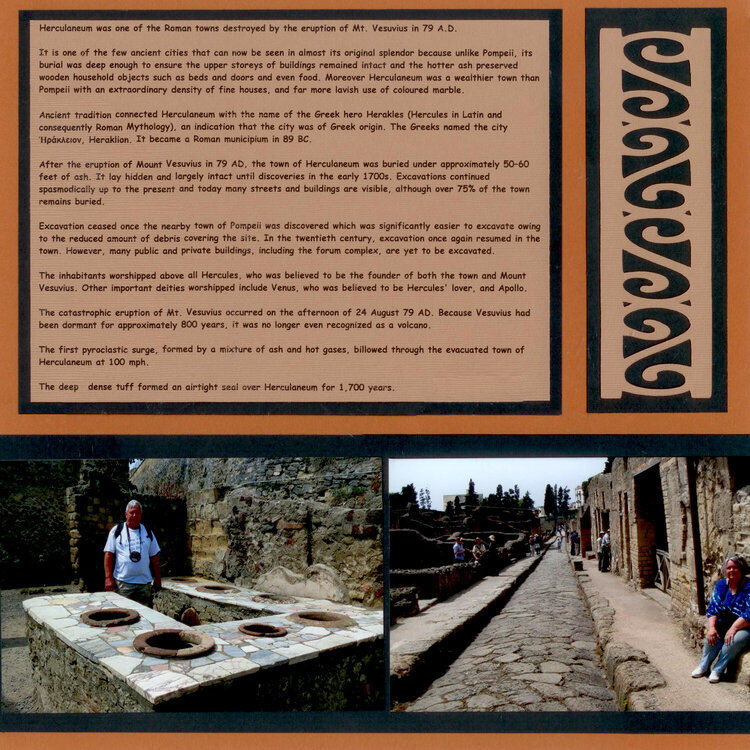

 Give a Cheer
Give a Cheer
Herculaneum was one of the Roman towns destroyed by the eruption of Mt. Vesuvius in 79 A.D.
It is one of the few ancient cities that can now be seen in almost its original splendor because unlike Pompeii, its burial was deep enough to ensure the upper stories of buildings remained intact and the hotter ash preserved wooden household objects such as beds and doors and even food. Moreover Herculaneum was a wealthier town than Pompeii with an extraordinary density of fine houses, and far more lavish use of colored marble.
Ancient tradition connected Herculaneum with the name of the Greek hero Herakles (Hercules in Latin and consequently Roman Mythology), an indication that the city was of Greek origin. The Greeks named the city (This is the name in Greek but I can't get the Greek letters to print on the boards.) Heraklion. It became a Roman municipium in 89 BC.
After the eruption of Mount Vesuvius in 79 AD, the town of Herculaneum was buried under approximately 50–60 feet of ash. It lay hidden and largely intact until discoveries in the early 1700s. Excavations continued spasmodically up to the present and today many streets and buildings are visible, although over 75% of the town remains buried.
Excavation ceased once the nearby town of Pompeii was discovered which was significantly easier to excavate owing to the reduced amount of debris covering the site. In the twentieth century, excavation once again resumed in Herculaneum. However, many public and private buildings, including the forum complex, are yet to be excavated.
The inhabitants worshipped above all Hercules, who was believed to be the founder of both the town and Mount Vesuvius. Other important deities worshipped include Venus, who was believed to be Hercules' lover, and Apollo.
The catastrophic eruption of Mt. Vesuvius occurred on the afternoon of 24 August 79 AD. Because Vesuvius had been dormant for approximately 800 years, it was no longer even recognized as a volcano.
The first pyroclastic surge, formed by a mixture of ash and hot gases, billowed through the evacuated town of Herculaneum at 100 mph.
The deep dense tuff formed an airtight seal over Herculaneum for 1,700 years.
No products have been added to this project.
Thanks for spreading positivity!
January 04, 2014
December 30, 2013
December 21, 2013
December 21, 2013
December 20, 2013
December 20, 2013
December 19, 2013
December 19, 2013
December 19, 2013
December 18, 2013
December 18, 2013
December 17, 2013
December 17, 2013
December 16, 2013
December 15, 2013
December 15, 2013